by Jenny Rose | Dec 20, 2018 | A Flourishing Woman, Creativity
Sometimes I spin my wheels.

Photo by Arun Kuchibhotla on Unsplash
I map out a week, a day, a list of directions with mileage and time apportioned to each part of the journey. I ascend the stairs to my expectant workspace, turn on a lamp, plug in a single string of red Christmas lights, light a candle and lift the laptop lid. Outside my windows, tiny snowflakes fill the air. The old-timers here say, “Little snow, big snow,” meaning small flakes indicate significant accumulation. I don’t know if this is always true, but I notice the size of the flakes. As I check the weather forecast, my e-mail and the headlines, my gaze is drawn repeatedly to the window. The hypnotic falling snow is the same color as the sky. Disordered ranks of brown cattail stalks stand ankle-deep in the sleeping pond. An infinity of branch, needle and twig is adorned with an even greater infinity of frozen white crystals, falling soundlessly and blurring the colors of stone and wood.
No snowflake ever falls in the wrong place — Zen saying.
It is then that my wheels start to spin. I have set aside this morning to write. I stare at the laptop screen, fingers on the keyboard. Nothing happens. Seeking inspiration, demanding creativity, I make notes, review notes already made, catch up on reading from favorite blogs and my current stack of books. I search for some solid traction so I can move through the day according to my tidy, efficient plan, but I find myself returning to the window, spellbound, empty of creativity or inspiration but full of wonder at the subtle beauty of the winter snow.
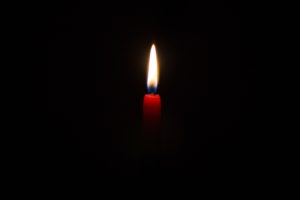
Photo by David Monje on Unsplash
It’s the contrast that catches my attention. My aerie is filled with books, beloved objects, the tools of my life. The warm sticky scent of a red candle fills my space. The red desk lamp I bought at Goodwill more than 10 years ago lights my worktop. My comfortable chair and footstool beckon me to sit and read. The room is warmed by the chimney rising up through it from the woodstove below. I hear my partner talking to our old cat in his office below me; not the words, but the loving sound of his voice that is reserved just for her. He is at his work and I am at mine, cocooned in our private spaces in our slouching farmhouse with lights and heat and the rinsed breakfast dishes stacked on the counter waiting for hot water and soap. We have things to do today, errands to run, people to talk to. We have plans and intentions.

Photo by Galina N on Unsplash
But outside, just beyond the single pane of glass in the old attic windows, is a monochrome world, delicate and cold, still and peaceful. The snow falls without effort. Each flake finds a resting place on the bodies of the trees or the water or the earth. The wood and stone have no place to go and nothing to do. They dwell in the vast power of simply being. The snow settles lightly.
I think about living minimally, weeding out my clothes, the week ahead, money, the perfect Christmas gift I can never find for a loved one, and whether or not we’ll make it into town to do the errands today. I think about drafting a query letter to send out with my first manuscript, which I just finished editing for the fifth or sixth time. I think about reviewing the water rescue information I’ll need next weekend when I travel with a couple of colleagues from work to get deep-water lifeguard certified. It will be a busy week. My careful plan blocks out this morning for coming up with this week’s blog post. I will write … I will begin now … My idea is … Ready, set, go!
My wheels spin, and I look out the window at my little black car, which is wearing a white blanket, and recognize the sinking feeling of no traction. No amount of urgency or frustration makes snow, slush and mud into solid ground. No amount of bullying makes my creativity compliant. I get up. I sit down. I glance at my journal, reread a paragraph in a book, look at some poetry. I feel restless and resentful of my own recalcitrance.
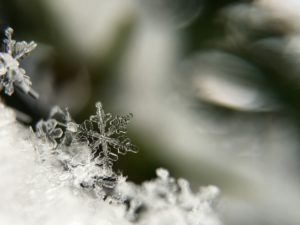
Photo by Aaron Burden on Unsplash
Outside, the snow falls, serene and inexorable as the fading light here in the last handful of days before winter solstice. I open the window and lean close against the hushed, frigid world outside it. My little candle, my lists, my inconsequential blog and my plan for this morning make no impression outside the window screen. It’s time for sleep and dreaming, time for rest. The forest knows, the earth and water know. They lie peacefully under the low sun and the long nights.
My wheels spin, making a noisy mess, throwing clods of half-formed ideas, provocative questions, lingering music of beautiful words, comments and conversations and observations, going nowhere. No traction. The morning is passing. I have not accomplished what I wanted to. I’ve neither rested with the winter snow nor produced a post. I’m torn between self-disgust, resignation and amusement. I think about heavy, cold chains; red, numb hands; wet jeans and sodden gloves; the steady clicking of hazard lights; the feeling of being late and time running out; the texture of wood ash, cat litter, sand and salt thrown onto snow and ice; and the futile laboring of spinning wheels.
The morning is gone. In half an hour we’ll try to go into town. My partner is out with the snow shovel. I shut the window, sit down and open the laptop. I type “Spinning My Wheels” and begin to write this post.

Photo by Teddy Kelley on Unsplash
All content on this site ©2018
Jennifer Rose
except where otherwise noted
by Jenny Rose | Dec 6, 2018 | A Flourishing Woman, Spirit
It’s the season of Christmas music. Like it or hate it, it seems to be inescapable just now. I’ve never understood why “My Favorite Things” is a Christmas song, but it always seems to be in the holiday music lineup, so the lyrics have been winding their way through my thoughts.

Photo by Ludde Lorentz on Unsplash
One of the things I love about life is how multilayered it is, and how, paradoxically, the activities demanding most of our time and energy are not necessarily the things that truly nourish us and make our lives worth living. We can look around and identify a few of our favorite things on the surface of our lives. Several layers underneath the surface, however, is a different list, a list of what we’re rooted in. The loss of surface things is painful. The loss of what we’re rooted in is terminal.
I’ve come to appreciate the complex layers in life gradually. For a long time I was only aware of my shallow roots, and they were in other people. My possessions, my place and the people around me provided me with a sense of identity and I didn’t see myself as separate from them.
In fact, I didn’t see myself at all.
Raindrops on roses and whiskers on kittens certainly enrich my life, but I’m not rooted in them. I don’t draw joy, passion, hope and my desire to engage with life from them.
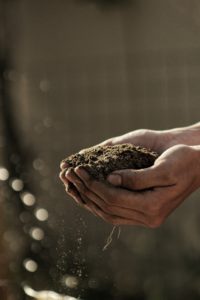
Photo by Gabriel Jimenez on Unsplash
So, I’ve been asking myself for the last few days, what are my roots growing in? What lies in the layers beneath my favorite things and my stories, beliefs and identity? What makes life possible and beautiful?
The resulting list, not of favorite things but of essential things, seems very odd to me. It’s so odd and unexpected, in fact, that I’m wildly curious about how other people would answer these questions. Am I the only odd one, or does everyone have a strange little inventory of necessities in their deepest layers of their experience? I was also surprised at how hard it was to excavate so deeply, far below my desire for seductive surface things I can buy. Making a wish list is easy. Making an external inventory of the stuff in our lives is also not difficult, though it may take some time. Descending deeply within ourselves, past our relationship to others, past our identity and past the things that fire or flood can take from us to scratch and sniff and burrow among our own roots, tasting the soil and filling ourselves with our own scent, is a journey through the dark without guide or companion into our own soul.
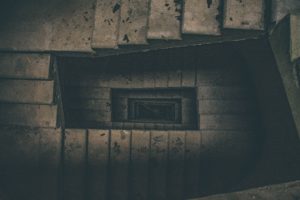
Photo by Riccardo Pelati on Unsplash
In that deep, internal place from which I draw faith, peace, and love reside a memory and a dream. The memory is of a crippled orange cat who taught me everything I know about unconditional love, survival, surrender, and courage. The dream is of my mother, young and carefree, as I have never seen her, leaping and running joyfully down a grassy hill under a blue sky toward a group of waiting horses, dogs and cats.
My roots must mingle with the roots of other lives, especially the patient trees, and always they reach for water in all its forms, as necessary to me as breathing.

Photo by Syd Wachs on Unsplash
I cannot imagine living without stories. My childhood was spent in secret gardens, Oz, Narnia and on the river with Mole, Rat and ridiculous Mr. Toad. The greatest loss of things I can imagine is the loss of my library, but the influence and inspiration of all the stories I’ve read, told, written and even forgotten have shaped me in countless ways that can never be lost. I am never tired of watching, listening to and reading the stories around me, mine, yours and theirs.
Stories are only one aspect of creativity, and creativity is perhaps the strongest support upon which my life rests. The power to make something out of nothing, the power to interpret a piece of life with music, words, dance, fiber, paint or any other material or medium, seems to me the most sacred power there is. The compulsion to make, not for money or fame, but as a love letter to life, animates and inspires me. The work of creativity is the greatest spiritual treasure we can give ourselves, one another and the world.
A dream that all will be well with someone beloved. A memory of a great love. Trees and water, stories and the joy of creation. These are the essential things without which I would not be. A strange assortment that doubtless makes a strangely shaped soul, but I don’t mind. I know who I am, and I know what I need.
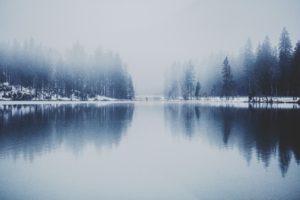
All content on this site ©2018
Jennifer Rose
except where otherwise noted
by Jenny Rose | Sep 6, 2018 | A Flourishing Woman, Self-Love
Four years ago someone said to me “women and children should be behind the shield.” The impact of that statement was like a kick in the gut. I was shocked by the way the words made me feel; a tidal wave of fury, grief and despair. It was so overwhelming I didn’t poke at it right away, but ever since then I’ve been playing around with the idea of shields, my version of circling around a potentially dangerous object with twitching tail and ears pricked, curious but wary.

Photo by Bogdan Kupriets on Unsplash
A shield is a piece of personal armor used to actively intercept specific attacks. Traditionally, shields varied in size, shape and thickness and were made of wood, animal hide, woven reeds or wicker. Shields have probably been around as long as we have.
A shield implies protection.
I think my initial reaction to the phrase “behind the shield” was painful because of my fierce, primitive longing for the kind of protection and safety that image implies to me. I’ve always been hypervigilant and concerned with identifying safe places. I know where the exits are, physical and emotional. I maintain bolt holes, if-the-sky-falls plans and a high degree of independence and self-sufficiency.
Because my own anxiety and fear have been such sources of private and mostly hidden anguish, I’m extremely sensitive to others who suffer in the same ways, either specifically or generally. In the days when I was doing volunteer fire and rescue work, I frequently took the role of lying on the highway in the glass, spilled gas and ruins of a vehicle calming and reassuring a trapped victim, monitoring a pulse if I could get to a pulse point, explaining what was happening as we tried to extricate, establishing responsiveness and orientation and taking a history while the fire department deconstructed the car around us and the EMTs and paramedics passed me pressure bandages, a blanket or anything else that was needed and we had room to use.

Photo by Jordan Whitt on Unsplash
In short, I give others, animals and human, the kind of calm reassurance and protection I’ve always craved myself.
It might be this longing is buried within all of us, a kind of deep and primitive desire to return to the ultimate safety of the womb or a longing for the in-arms experience every baby needs and has a right to receive. Except that the womb is not always safe, and many of us do not get sufficient in-arms experience as babies. It might be that I’m uniquely broken in this, but I doubt it. I suspect much of our irrational and destructive behavior has to do with trying to feel safe, sheltered and loved, including sexual and behavioral acting out and addiction.
In any event, my desperation to be shielded motivated me to become a willing shield for others. This adaptation was greatly assisted by being female and then further strengthened when I became a mother.

Photo by James Pond on Unsplash
I never thought of myself as a shield. It never occurred to me such a role was a choice. I defined myself as a protector, a nurterer, a figure of maternal and female strength, a life-giver and a peace maker. I thought of myself as a good woman. I automatically placed myself between the harsh edges of the world and those I loved. I protected my husbands and partners from the necessity to deal with anyone else’s needs (including my own) and threats to their egos (including me). I protected my sons from the immaturity and selfishness of my husbands and partners. I tried to protect people from their mental and physical pain, from the consequences of their choices, from their own feelings and from any other irritation, hurt or harm.
Shields were originally made to protect from specific kinds of attack, but I tried to shield others from all kinds of danger: blade, arrow, blunt weapon, words, pain, consequences, inconvenience, feelings and worry. I was determined to be a perfect shield for all my loved ones.
Predictably, I failed, and nobody likes a shield that fails. I regularly heard about my inadequacy.
No one ever suggested to me that I protect myself, and no one invited me behind their shield, even for a rest. I approached every relationship with a craving to be taken care of, to be held, to be loved. I believed in romance and part of romance certainly included being taken behind the shield of some kind, competent man. If you’re thinking this was needy and dangerous behavior, you’re right. Somehow, I always ended up with one more person in my life I needed to shield, instead of the other way around.
The inability to trust and the craving to be protected and cared for can tear a woman apart. I’m certain there have been people in my life over the years who wanted to give me safety and security, but I refused to let anyone get that close. I don’t want to rely on anyone. I’ll go to great lengths to avoid asking for help. At the same time, I’ve spent much of my life working happily with children, animals, in hospice and as a first responder.
For a long time I thought if I could get a good enough job and earn or save enough money I’d be safe, but I was wrong about that. We live well below the poverty line, but I feel safer now than during any other time in my life. I’m also less concerned about money than I’ve ever been before. Money is not safety. I also thought if I could just find the right home I’d be safe. I found the right home and discovered that wasn’t the solution, either. Wrong again.
Since I came to Maine, everything has changed. Now I live in a situation that does not require constant emotional labor. I live with an adult who does not need or expect me to protect him. I have found reciprocal relationships.
This morning, as I went about my daily breakfast routine, it occurred to me that I’m no longer looking for a shield to crawl behind. The need for safety doesn’t drive me now. I’m not even sure I know what I mean by safety. What is the threat I’m trying to protect myself from? Aging? Poverty? Being unloved? Abuse? Getting my feelings hurt? A blow to my pride? Abandonment? Betrayal? Internet trolls? Loneliness? Crazy people with guns? Illness? Death?
Yes. All these and more. And most of these have already happened, some more than once, or are happening right now.
In spite of that, I’m okay. I’m better than okay. I’m great. I’m resilient. I believe in my ability to survive and thrive. I don’t mind aging and I’m not afraid of death. I’m emotionally intelligent and I understand power dynamics. I’m as safe as anyone, and a lot safer than millions.

Photo by Miranda Wipperfurth on Unsplash
I have my own shield now. I made it (without knowing what I was doing) out of dragonfly wings, cobwebs, stardust and the sound of bats flitting around my head in the dusky barn on their way out to hunt. I made it out of integrity, passion, dance, laughter, creativity, ritual and spirit. There’s room behind my shield for others to rest, breathe and make shields for themselves, but I’m not spending my days searching for those in need of such a shelter. I can’t make a shield for you or even my most beloved to carry. I can’t keep everyone or anyone safe. I can’t shelter the world.
The only person in charge of my safety is me. The only person I have a responsibility to keep safe is me.
I am not a shield. I don’t have to take the blows or go to war. I don’t have to buffer, neutralize or ameliorate the experience of life for others. I don’t have to prostitute and beg in order to be dragged behind someone else’s shield. I made exactly what I need for myself, and no one can take it away from me.
Knowing I have what I need, I’m no longer approaching interactions with others from such desperation to be cared for. I still don’t like to ask for help, but I’m practicing doing it anyway. I’m much better at taking care of myself and no longer put the needs of others before my own. I’ve developed useful coping mechanisms that help me feel safe.
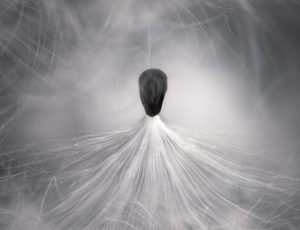
Photo by Robert Zunikoff on Unsplash
We all construct shields emotionally, intellectually, behaviorally and with our choices. None of them really protect us from our fears or the experience of life. There is no way to shield against generalized fear and anxiety. It’s counterintuitive, but the best path I’ve found to feeling safer and more secure is to drop my armor and open my arms to my fears. I don’t know why that works, but it does. Monsters are ten times larger when I’m running away from them. When I run toward them they shrink before my eyes, and sometimes they even run away from me. That’s why I build my shield from things like iridescent hummingbird feathers and milkweed fluff. It won’t stop a harsh word or a bullet, but I carry with me joy, wonder, awe, mystery and beauty. My shield is a story of love and a story about what makes life worth living. It reminds me to stand tall and unafraid, looking life in the eye, confident in my ability to endure, heal, laugh and learn.
From behind the shield: My daily crime.

Photo by Henry Hustava on Unsplash
All content on this site ©2018
Jennifer Rose
except where otherwise noted
by Jenny Rose | Aug 30, 2018 | A Flourishing Woman, Creativity
It’s been a busy week. I haven’t done a lot of writing. Some weeks are about notes, research, sudden creative inspirations, edits and days with a foot in two worlds, the world of the auto shop I’m sitting in this minute with a rattling air conditioner in the window to combat the 100 degree heat index outside while mechanics do surgery on the inside of my old Hyundai to fix the air conditioning, and the world of my imagination.
Other weeks are just about life — activity, interaction with others, appointments, friends and unexpected opportunities, along with the small stories of household and routine, like the AC in the car suddenly ceasing to breathe chill and becoming as thickly humid and overheated as the land’s late August exhalations here in Maine.

Photo by NeONBRAND on Unsplash
A long time ago, when I was a teenager, I got my first job as a summer lifeguard at the local outdoor pool. I loved it. I got trained as a water safety instructor, which means a swim teacher. I was also an IV-certified EMT doing volunteer fire and rescue work.
I’ve never lost my love of water and swimming, and I visit the pool once a week here in Maine. As a regular, I’m familiar with the staff and the facility. A couple of weeks ago one of the pool staff mentioned a part-time position was opening up. Before I left that day I applied for the job and was set up to re-certify as a lifeguard, more than 30 years after the first time. Thirty years. How did that happen?
Now, of course, the process for getting certified is all online. There’s a book, a big, brightly illustrated textbook filled with pictures and graphics, but all the material in the book is also online. The first time around, I learned out of a small paperback manual with black-and-white line-drawn illustrations. The online course is about seven hours of audio, video, multiple-choice questions and written material. At the end, there’s a test. A few hours at the pool in order to practice skills (the most important part) completes the re-certification process.
I’m a good student and confident of my skills, but I unconsciously expected much the same learning experience I had the first time around. However, lifeguarding techniques have changed. The emphasis used to be on personal safety, as drowning people often panic and become dangerous to their rescuers. I spent a lot of practice time in the diving well with a huge college kid built like a tank while he pretended to drown and then tried to drown me as I tried to save him.
Now, there’s great new equipment and gear that make water rescue considerably safer, and the techniques have changed accordingly. Also changed is the way one approaches CPR. When I learned and performed ventilations as a first responder, it was, literally, mouth-to-mouth. Now, lifeguards are equipped with fanny packs in which they carry plastic ventilation masks and Nitrile gloves as protection from body fluids and possible pathogens. Everything, practice included, is done with the mask as a barrier between victim and rescuer.

Photo by Chris Kristiansen on Unsplash
It’s a strange feeling to revisit this information. Lots of memories. I don’t know if I’ll get the job, but even if I don’t I’m pleased about the chance to review. I think everyone should take basic first aid and CPR, and it’s been a long time since I had a refresher. The first time around, I was the youngest lifeguard on the team. This time, if hired, I’ll be one of the oldest. What an interesting circle.
My partner and I love cats. For several years I’ve been uncomfortable with the problem of cat litter disposal. I’ve tried some of the more organic litter, but never found anything both the cat and I liked. The clumping litter is convenient, but I collected it in plastic grocery bags and never found a way to compost it. We’re trying to reduce our use of plastic and our non-compostable waste, and dealing with cat litter has become more and more of a problem ethically. My partner recently came across the idea of using wood stove pellets as cat litter, so we tried it.
I’ve never had a pellet wood stove. It turns out the pellets are small and made of compressed wood scrap, a little bit like animal feed to look at. They’re cheap to buy, especially if you buy a pallet at a time. Cat litter costs three times as much. When they get wet, the pellets dissolve into sawdust. Cleaning the box is like cleaning an animal stall bedded in shavings. I scoop out the damp sawdust and solid waste and throw in a new scoop of pellets. There’s absolutely no smell and less mess outside the box. If our old cat does get pellets between her toes and tracks them outside the box, they’re easy to pick up.
Best of all, we can compost now, and I can stop throwing away any kind of plastic shopping bags. We can switch entirely to canvas bags. Less to haul off to the dump.
My partner has a fleecy polyester blanket in deep, rich colors of brown, black and green that has been a bed for multiple cats for years. We recently cleaned out the little niche it was lying in. I went over both sides with a stiff dry scrubbing brush trying to remove grey and black hair belonging to long-dead cats and then we washed it, but it was still coated with cat hair. I had a lint brush, but that didn’t work at all. I also tried a damp sponge, which is what I’ve always used on upholstery and cloth to remove cat hair. A damp sponge works well if you do it once a week, but this blanket had no attention for years.
So, I googled it. As you can imagine, this is a common problem.
My favorite solution was to obtain a paint roller, wrap the roller in duct tape, sticky side out, and store it, along with a roll of tape, in a closet, bathroom or with cleaning supplies. What a great idea! Fast, easy and cheap. However, I wasn’t sure we had a clean paint roller, so in the end I found a clean plastic dish glove, hung the blanket over the back porch railing, and rubbed it with my gloved hand. I didn’t have much hope, but it worked like a charm. Who knew? Cat hair came away in clumps and clots and floated down onto the grass, as well as adhering to my sweaty face. Too bad it’s not nesting season. I wore out my arm and the blanket looked a lot better, but there was still plenty of hair adhered to it. When I’d rubbed away all I could, I put it in the dryer with a fabric softener sheet on the air setting. A half hour later the dryer trap was filled with cat hair and the blanket was like new.

Photo by Viktor Jakovlev on Unsplash
I also spent part of a day kayaking with a friend on a lake. Too bad I’m not as graceful with paddling as I am swimming. Too bad my arms are about as strong as spaghetti noodles. Too bad I’m so inept the paddles clunk against the side of the kayak with every stroke. Too bad I can’t get the hang of using the paddles without having water run down them and into my lap, or inadvertently bumping my long-suffering friend in the head.
I had a fantastic time.
Then we spent a hot afternoon with an old friend of my partner’s shooting at round metal targets with various firearms and varying degrees of accuracy while I asked a thousand and one questions and continued my education on handling guns safely and developing confidence and skill in using them.
So that, friends, is what I have been doing instead of working on the sort of post I usually write. In the pause from writing, I’ve been refilling the well of creativity with everything, and with nothing. With what it’s like to be alive in the world. With sore shoulders from paddling, remembering old rescue skills and long days on a lifeguard stand in the sun, the challenges and joys of living with cats and the smell of cordite. With spending a morning working in my friend’s farm store chatting to locals, enjoying the animals and studying my lifeguarding manual. With heaving boxes around and shelving books during my volunteer hours in the used bookstore. All of this will somehow, some way, someday recycle into my writing, because everything does.
My car is ready. I’m off to pick up my partner’s laptop at the computer shop in air-conditioned comfort. Then I’ll go home and give this draft another look; decide either to delete the whole thing and start over or get it ready to publish in the morning. I wish you all a good week and a safe Labor Day.
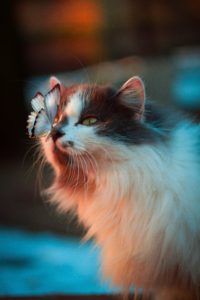
Photo by Karina Vorozheeva on Unsplash
All content on this site ©2018
Jennifer Rose
except where otherwise noted
by Jenny Rose | Jul 19, 2018 | A Flourishing Woman, The Journey
In the used bookstore in which I volunteer, I found a slim paperback book of poetry, modestly and plainly bound, entitled A Gypsy’s History of the World, by Kim Robert Stafford. It called to me and I bought it for $4.00.

Photo by Syd Wachs on Unsplash
I had never heard of this poet, but he turns out to be quite well-known and has published several books, which I’ll be looking for now. In the meantime, this book is filled with treasures.
For a couple of days I’ve been groping for this week’s post. Sometimes they come so easily, these posts. Other times I flounder. It seems that the more I have going on, the harder it is to come up with a focused essay. Irritating, but writing can be like that.
When I listen to the sound of my life this week I hear a cacophony. There are the half-excited, half-apprehensive feelings I have as the night approaches on which I’ve scheduled a local venue to once again try to start a dance group. (Will I be a good leader? Will they like me? Will anyone come?) There’s the increasing pressure I feel to find a way to earn a paycheck. There are new friends and our conversations as we strengthen our connections. (Am I talking too much? Am I offensive? Am I too blunt? Do I ask too many questions?) I’m preoccupied with family dynamics and past, present, and future possibilities and fears. (What’s the right thing to do? What’s loving? What’s useful? What will people think about me? How do I take care of everyone’s needs and expectations? How much irreparable damage will I do if I make the wrong choice?) There are my weekly activities and appointments. All the material of my daily reading swirls in my head, awaiting synthesis and integration.
In my creative world, I’m with Pele, the Earth-Shaper, sensual, passionate and angry. This week others will come to dance with her, to make offerings, to propitiate and reconnect. Revolving around her are other characters: Rumpelstiltskin the dwarf; Poseidon, the Greek god of the sea; a little brown bat called Ash and his companion, a bark beetle; the eldest of the twelve dancing princesses, Ginger; an old woman, Heks, apprentice to Baba Yaga; and Persephone, who comes to drum for the dance.
All this, and I can’t come up with a thing to post about.
I know this dynamic. The more pressure I put on myself, the harder I try, the more elusive inspiration will be.

Photo by Pascal Müller on Unsplash
It’s a foggy morning here in Maine. Foggy and oppressive with high humidity and a threat of severe weather this afternoon. I’m planning on meeting a new friend for a walk and then I’ll swim. I decided to stop trying to write a post. I turned off all the lights up here in my little attic space and lit a candle. I picked up A Gypsy’s History of the World and turned back to the beginning of the book.
Duets
A dream flips me into the daylight.
I pry my way back:
a door opens, I enter, never
escape; the jailor sings by morning
duets through the bars with me.
I wake and out my window
by dawn a blackbird sings and
listens, sings and listens.
Listen. Thistledown jumps its dance
in the wind. I’m small and have
no regrets. Yesterday is a temporary
tombstone, a hollow stalk
on the hill. I’m putting my best
ear forward; in the space between songs
I’m travelling. My hands make
whistling wings in the wind.
No things meet without music:
wind and the chimney’s whine, hail’s click
with the pane, breath in a bird’s
throat, rain in my ear when I
sleep in the grass. I miss the
whisper of a swallow’s wings
meeting the thin air somewhere far.
Branches of my voice, come back.
Inside each song
I’m listening.
At once the cacophony in my head faded away, no more than the murmur of the trees and breeze or the ocean’s breath. For a few minutes, I thought about being small and having no regrets, let alone imagining future regrets. Yesterday and yesterday and yesterday, all temporary tombstones. All my yesterdays add up to almost 20,000 hollow stalks on a hill. And yes, activities and schedules, efforts and appointments, hopes and fears, words and information, friends and family, the way the shadowed ceiling looks in a sleepless hour and the path of silent tears on their way to my pillow. All of that. But I forget about the space between all those songs. I forget that I’m traveling through this place, this life, and these landmarks.

Photo by Dakota Roos on Unsplash
Sometimes I forget to just listen to life’s music, just witness, just be present and still. Sometimes I forget to fold my hands in my lap and watch the wavering shadows the candle makes inside the song of my life. The song will not be endless. One day it will be yesterday’s song, held in a hollow stalk on a hill. I can’t reach out my hand and clutch it, pin it down, record it and make sense of it. I don’t need to. I don’t want to.
Today, friends, I’m listening.
My daily crime.
All content on this site ©2018
Jennifer Rose
except where otherwise noted





















